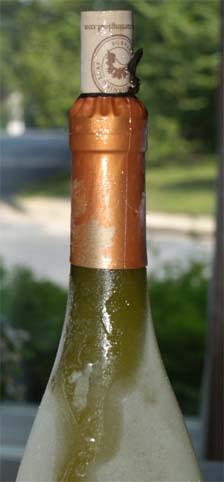It’s a common problem. You buy a bottle of wine that you want to server that same day. And you want it chilled. So, is the freezer a good option for quickly chilling a bottle of wine?
Well, chilling a bottle of wine in the freezer is one method. But, it has a couple of issues.
First, a freezer by definition is an environment that is below freezing. Right? So, that’s 32 degrees F or below. And, assuming you are trying to chill a bottle of white wine, rosé or sparkling wine, the best serving temperatures for those are going to be somewhere in the range of 38 to 55 degree F range, depending of the type of wine. Thus, a freezer is going to be too cold if the bottle remains in the freezing environment too long.
And, you run the risk of actually damaging the bottle. Depending on the alcohol content of the wine, it will freezer somewhere in the 15 to 20 degree F range. Because wine is mostly water, it’s going to expand when it freezes which can either push the cork out of the bottle (see photo) or, even worse, break the bottle!
The second issue with using a freezer to quickly chill a bottle of wine is that it’s really not that quick. It will still take quite a while to get that bottle to your ideal serving temperature.
So, what’s the best way to quickly chill a bottle of wine? Well, find a container that’s a bit larger than the bottle or bottles, fill it with ice and then fill it with water. The ice-cold water will then fully surround your bottle and it’ll be chilled rapidly. And, you don’t need to worry about it freezing!
Cheers!







